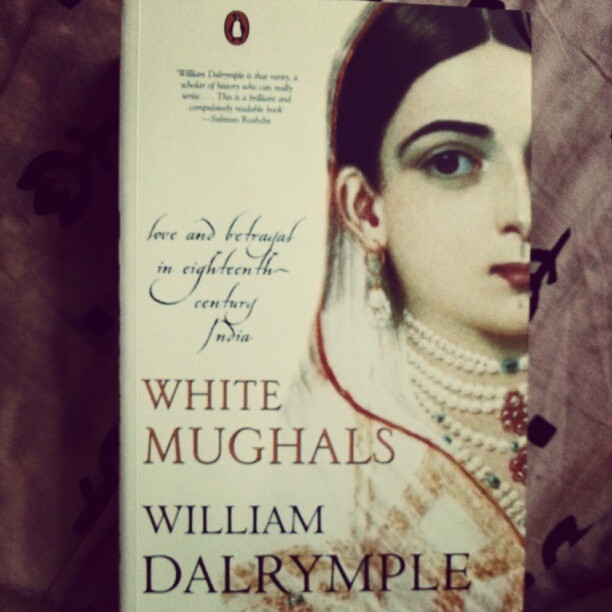William Dalrymple
In the eighteenth century, when the East India company was not yet the force it would one day be, there existed a few Englishmen (and other Europeans) who took up the ways of the fading Mughal culture. These were the White Mughals and among them was James Achilles Kirkpatrick, who arrived in India a soldier and soon rose to be the Resident of Hyderabad, mostly thanks to the influence of his older brother William.
Friend of the Nizam, and an ardent lover of the Indian culture he came in contact with, he was willing to sacrifice everything to marry Khair un Nissa, a Hyderabadi noblewoman, who was already engaged to be married. Although the core of the book is their love story, and its aftermath, Dalrymple does take a while to get to it. He first gives us the prevalent scenario and glimpses of the other White Mughals like Hindoo Stuart, David Ochterlony etc to set the context. Even after James is fully in the picture, he focuses on the Nizam’s court, its players and its intrigues in which James is heavily involved, Hyderabad’s strained relationship with the Marathas and the charged political atmosphere which the Company was trying to profit from. But this also gives us an elaborate view of Hyderabad, its people, its art and culture and finally James’ relationship with Khair. In this broad canvas, we can also see the various Governor Generals and their varied stance on relationships with India and Indians. The images allow us to visualise the life and the times.
<spoiler> After the death of James, the book follows the life of Khair as the story moves from Hyderabad to Calcutta to Masulipatnam (and tangentially Chennai) giving us tiny glimpses of the social milieu there, even as Khair pines for her children who have been taken away from her. Dalrymple provides a touching description of the very young children shedding their Muslim identity and donning a Christian one as they board the ship to England. In fact, the painting of the children with Sahib Begum’s (soon to be Kitty Kirkpatrick) teary face is extremely poignant.
Khair’s only consolation is the presence of her mother, the correspondence with her grandmother and her (ultimately) tragic relationship with another Englishman. Except for the well being of Kitty Kirkpatrick, James’ and Khair’s daughter, the lives involved all have tragic endings, many of which cause lump-in-the-throat moments. Khair’s mother dies in penury and her son dies an invalid at a young age. Though Kitty corresponds with her grandmother, they never get to meet each other. As the author says, the death of Kitty in 1889 was the end of an era, of a world where cultures and people mixed freely without the biases and clashes that came later. A wonderful read for those interested in history.

